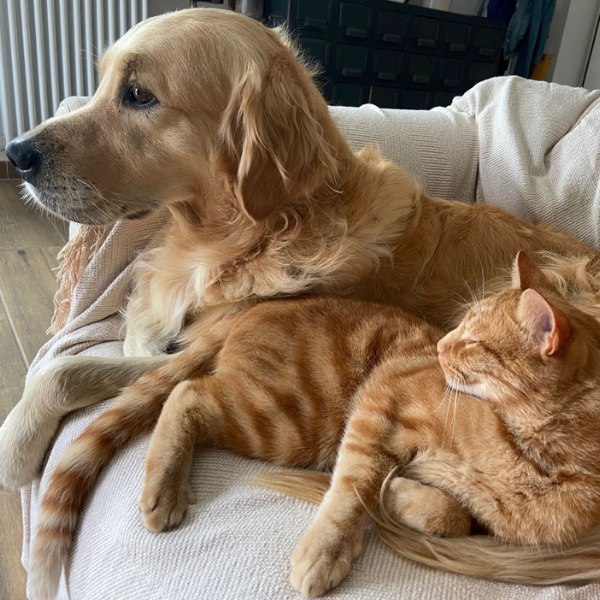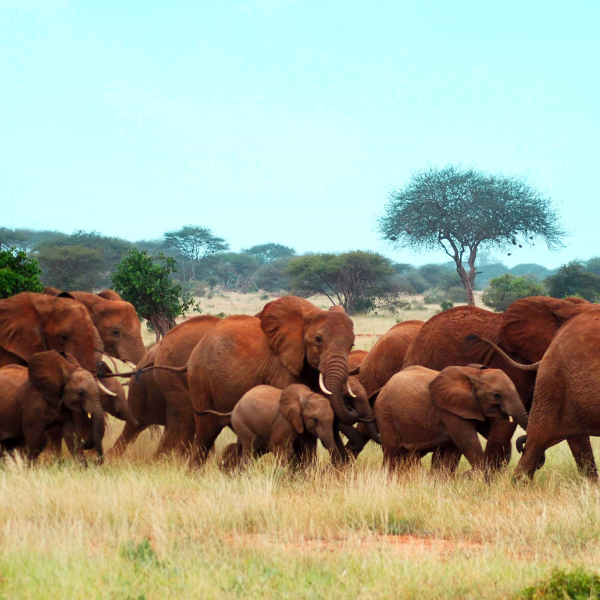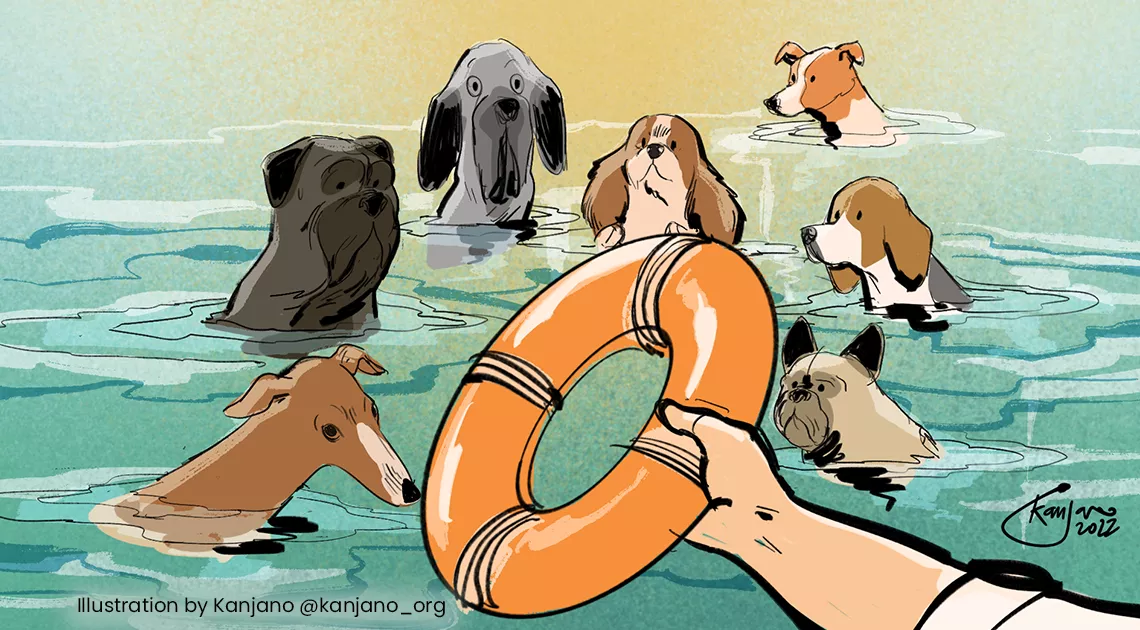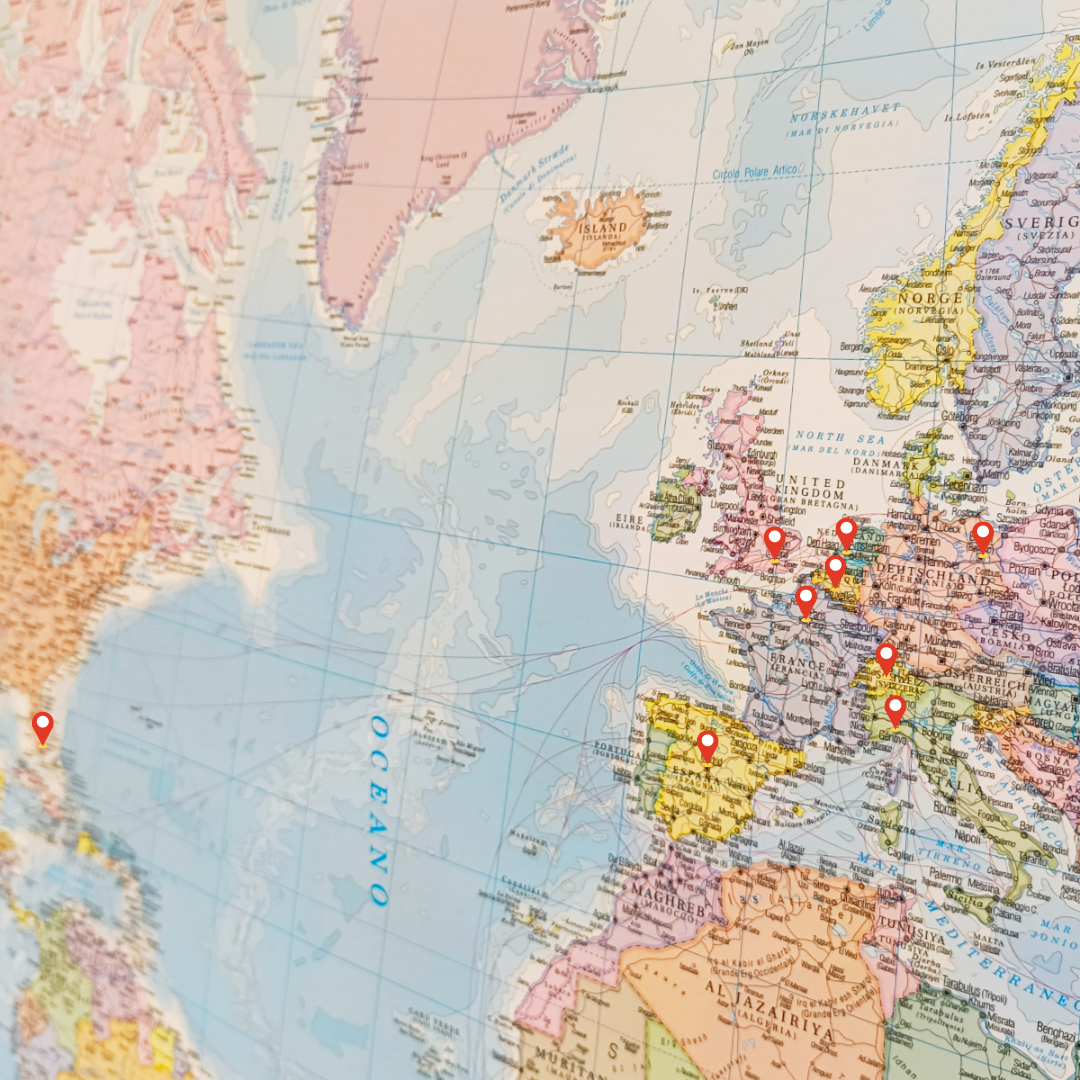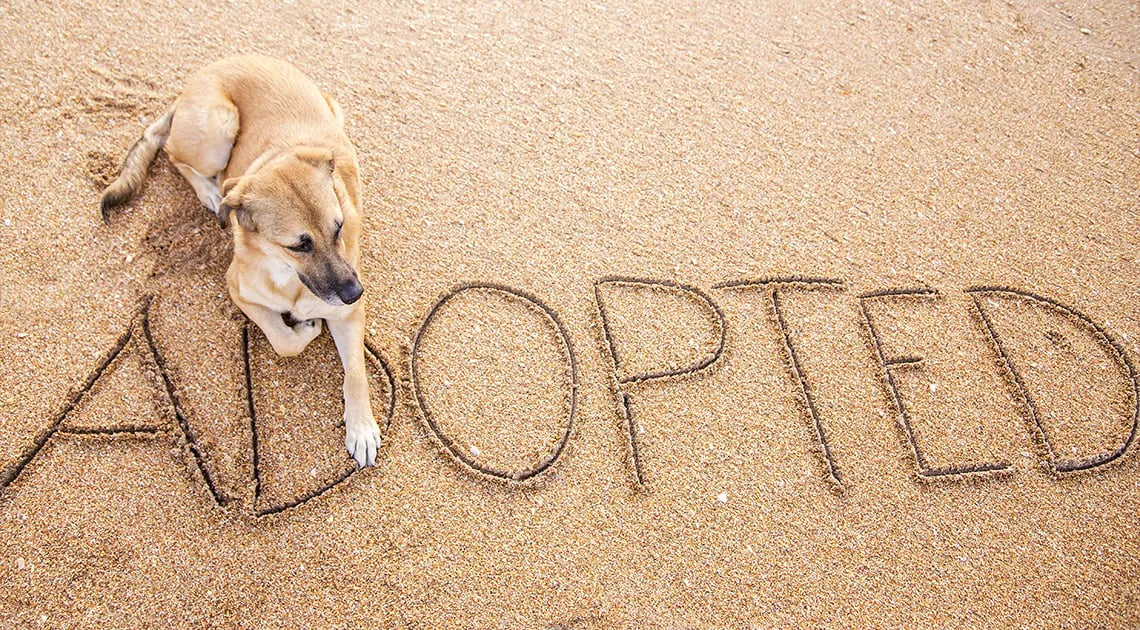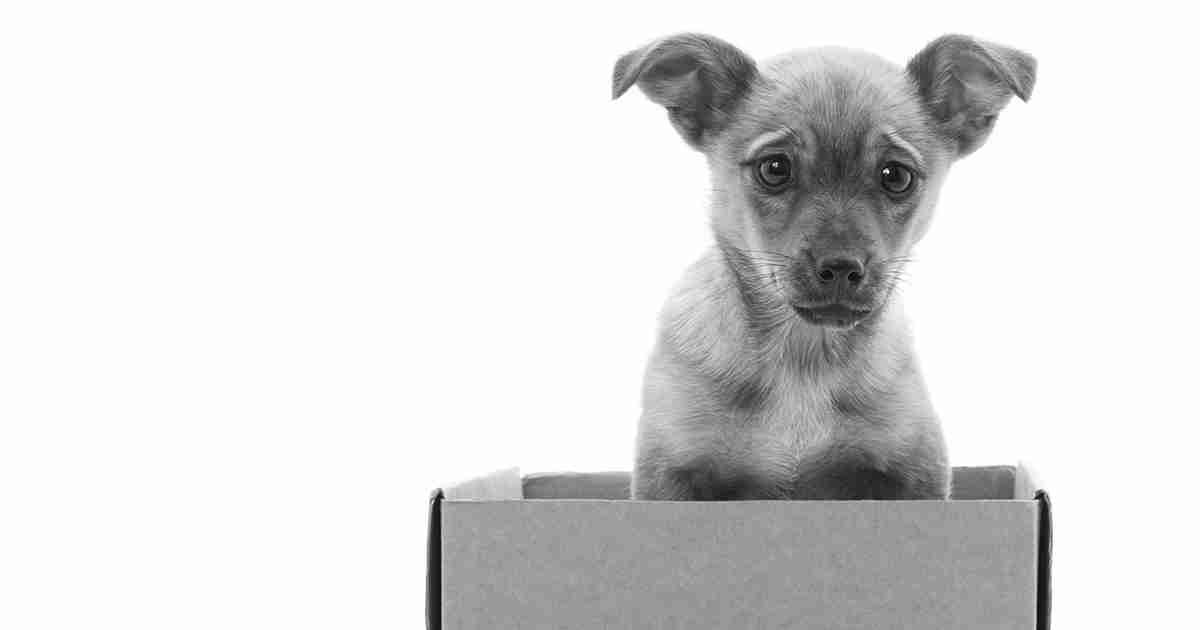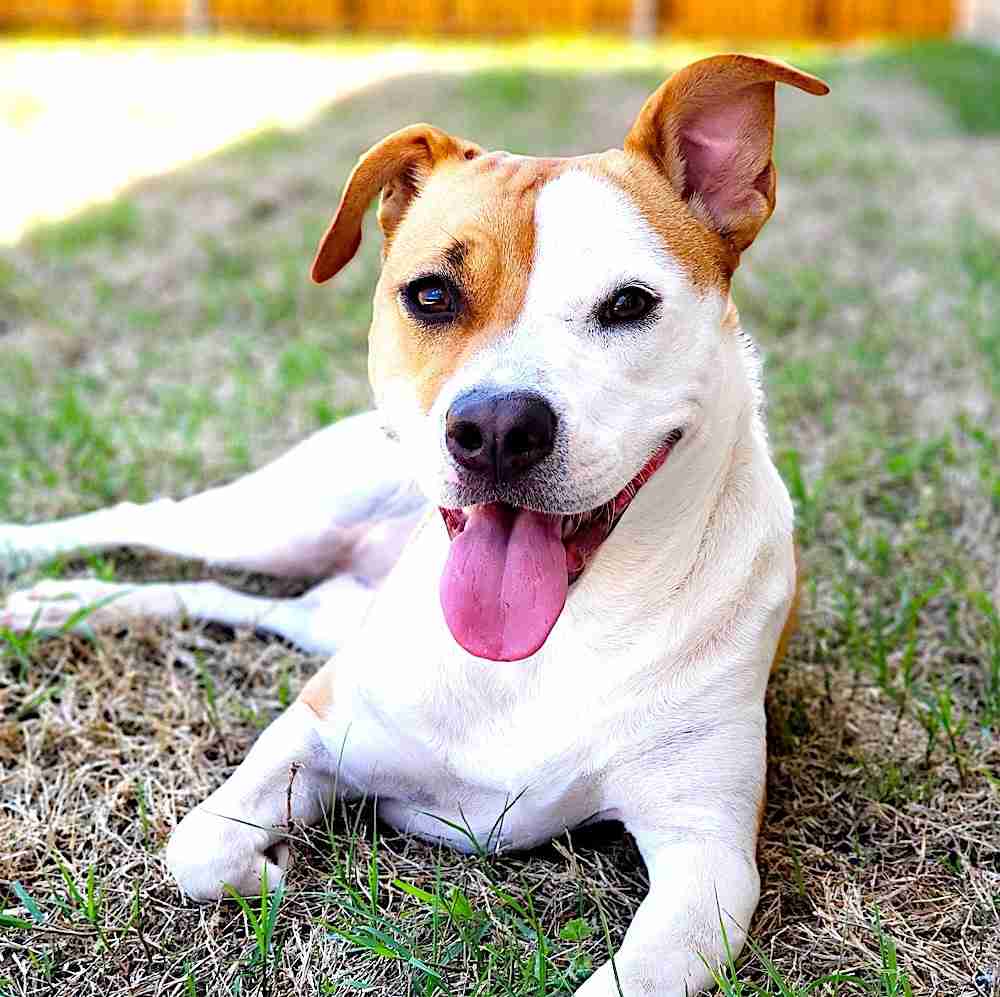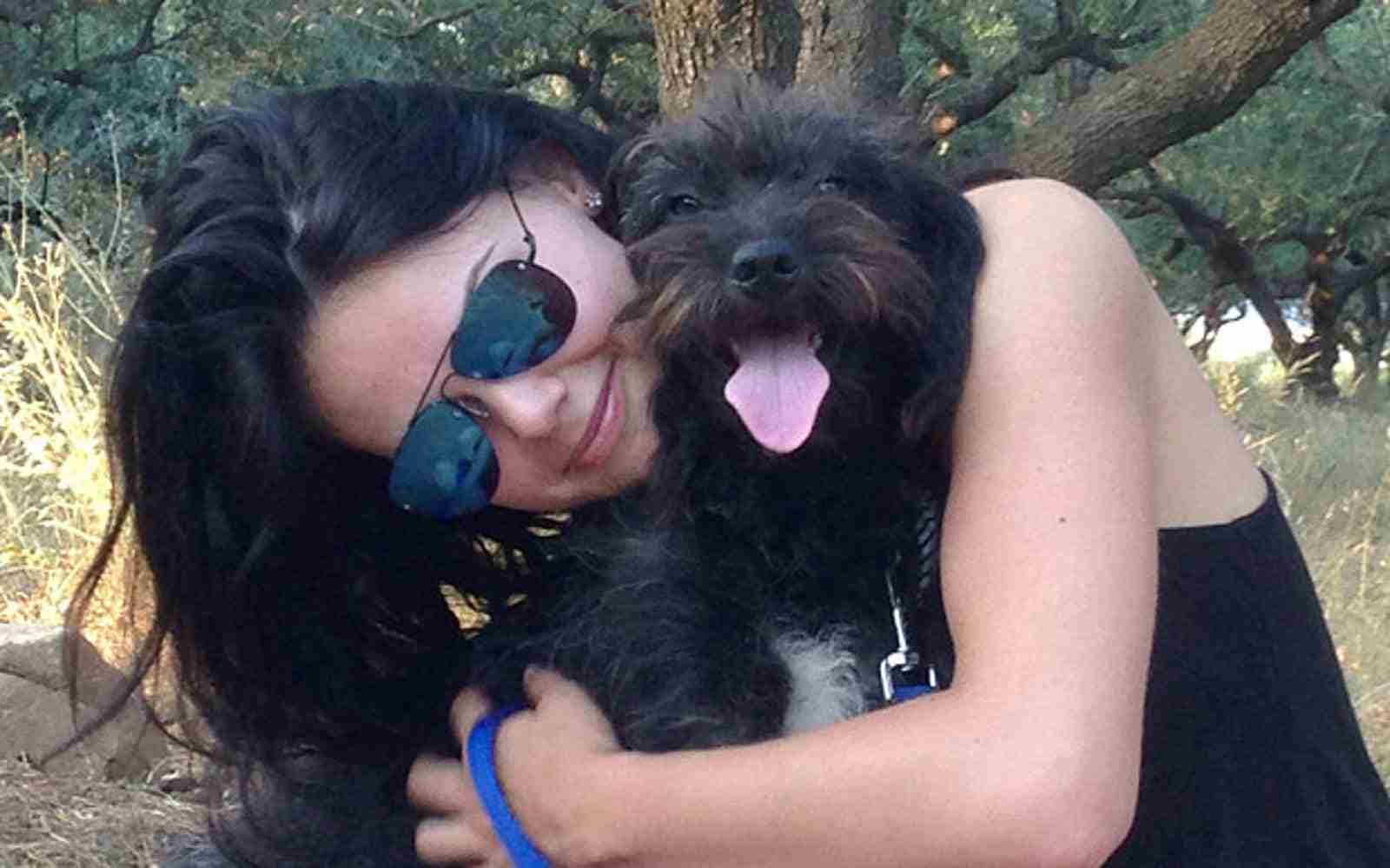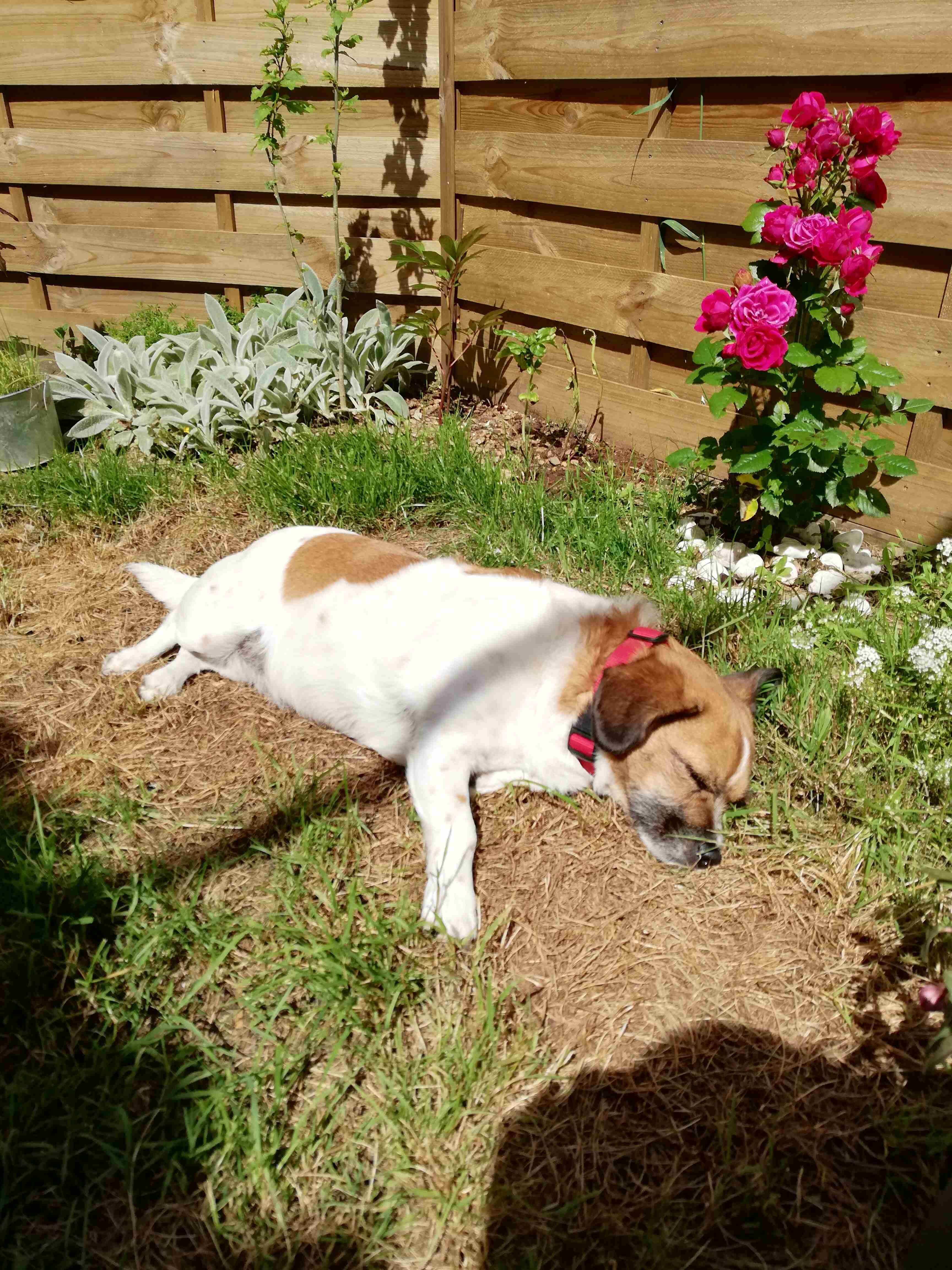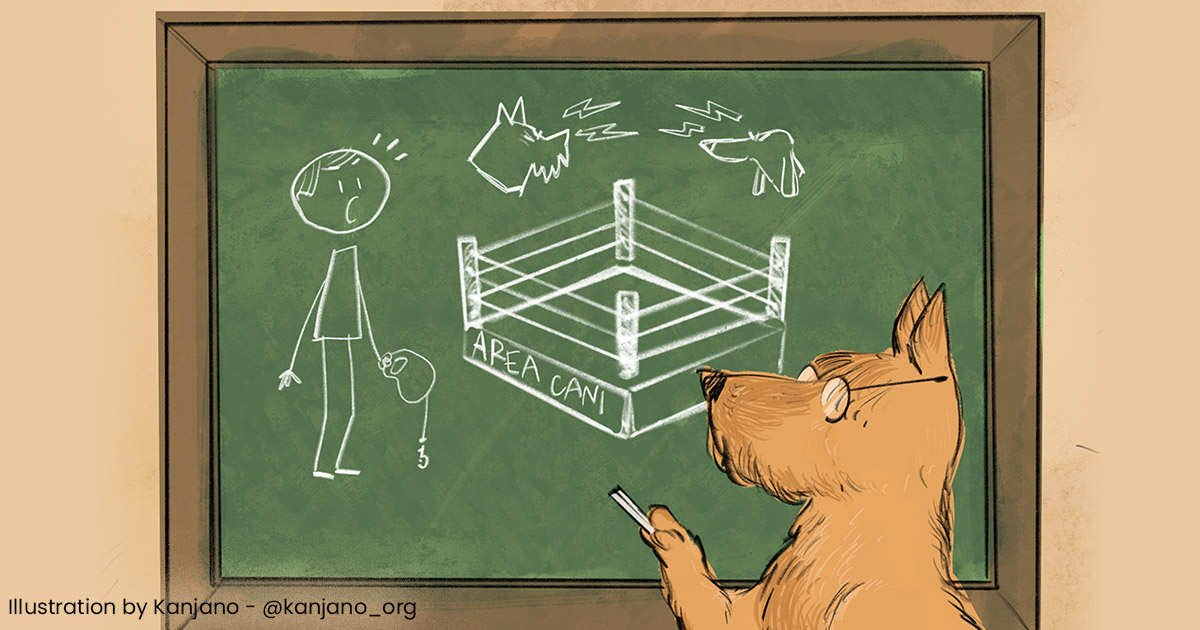The Army of Rescue Dogs

by Dunia Rahwan
I understand those who are fixated on breed. I am, too. After all, behind a breed or a group of breeds, there are pronounced character prerogatives, predispositions and motivations. In short, there is genetics. So, regardless of the aesthetic appearance, which should be the last of the useful vestments that guide our choice of dog, the breed provides generic indications about its temperament. My obsession is with the Epagneul Breton, like my beloved Vilma, who I irresponsibly adopted nine years ago. When she came into my life, I was mainly studying the behaviour of wild animals, but to help her, I had to deepen my knowledge of dogs; in fact, from the first day, Vilma manifested a large compendium of behavioural problems I did not know how to face. Thanks to Vilma, moreover, I discovered the existence of rescue groups dedicated to the adoption of purebreds, and it is there that I found my greatest joy.
The rescue army
Among the thousands of dogs waiting for a family, many are pure breed or almost. The fact that they ended up in kennels or shelters doesn’t mean that they’re aggressive, unmanageable, villainous jailbirds. I have been working in kennels for many years and I can confirm that almost all dogs find themselves in a cell because they had the enormous misfortune of meeting the wrong human, and they have no responsibility for their fate, which is decided by someone else. If you desire a purebred dog, the most ethical choice would be to look for it first among the rescue groups dedicated precisely to your beloved breed, which are having great success on social networks, in particular Facebook. The dog may not have pedigree, but it is highly likely that it will have the aesthetics of its race, and especially the characteristics, which must be evaluated carefully before you make a choice. Seeing is believing: enter the word "rescue" in the Facebook search engine followed by any race, for example labrador, and you’ll be spoiled for choice.
Adopt with your head, as your heart will be deceitful
Vilma's adoption had a disastrous beginning. The adoption notice explained that she had been captured in Campania and was ready to leave with a dispatch rider, and described her as being only one-year-old, eight kilos and adaptable to every situation; extremely suitable for a first experience. Then came Vilma. She was at least 3 years old, twice the declared weight, epileptic, neurological, terrified of everything, especially the city and other dogs; she had never seen a harness or a leash before and it was impossible to convince her to do her business outside or walk for more than 100 meters. Moreover, she was completely uninterested in connecting with the members of her new family and my partner at that time had never had dogs before: I wanted to shoot myself! This quite traumatic experience led me to disclose, years later, my explanation on conscious adoption (link to the article), with particular attention to those made through rescue groups, real treasure troves to rummage around in as long as you know how to look for the right dog. Here are some tips to avoid the most calamitous mistakes: choose a dog that you can meet in person; if there are already dogs in your family, do a compatibility test beforehand, and do the same if you have cats to make sure the dog gets to know them and does not try to eat them; finally, if there is not an expert in dog behaviour at the kennel when you are there, take someone you trust to help you make your choice.

Greyhounds, alien creatures
Among the most organized and serious rescue groups are those dedicated to greyhounds, elegant almost princely dogs that could be suitable for everyone. Buying one on a breeding farm is a sacrilege because every year in Europe, thousands of greyhounds exploited for hunting or gambling-related racing need a home. Greyhounds are employed for racing at dog tracks in the UK and Ireland, while galgos greyhounds are employed in Spain by the galgueros (grehound breeders) for hunting. It is estimated that every year in these countries 70,000 greyhounds are killed as they are no longer usable for commercial purposes. But the lucky ones enter the adoption circuit in search of liberation from an existence of fear. Although they have had a hideous life, these splendid animals are endowed with an incredible ability to adapt and great resilience to face traumatic events positively. So, even if they suffer every kind of abuse, they are able to forgive and recover an inner balance. Although they are dogs of a certain size, they live well even in the house, adapt to life in the city and do not necessarily need a garden; to debunk a widespread myth, moreover, they do not have to run continuously but have the common needs of all dogs and, in fact, they tend to be lazy. They rarely pull on a leash (greyhounds learn to behave perfectly with beatings, so they are soldiers) and are very complicit with each other, so much so that often those who adopt one then get hooked! At first, these dogs may be fearful and distrustful, but give them the right time to adapt and assure them of a quiet family situation, and they quickly calm down and rely on their humans. The reputation given to greyhounds by ruthless hunters does not prevent them from living with cats, provided that the insertion into a family is carried out correctly and tested in the pre-adoptive process. Among the most active associations in Italy, we have Pet Greyhounds and SOS Greyhounds.
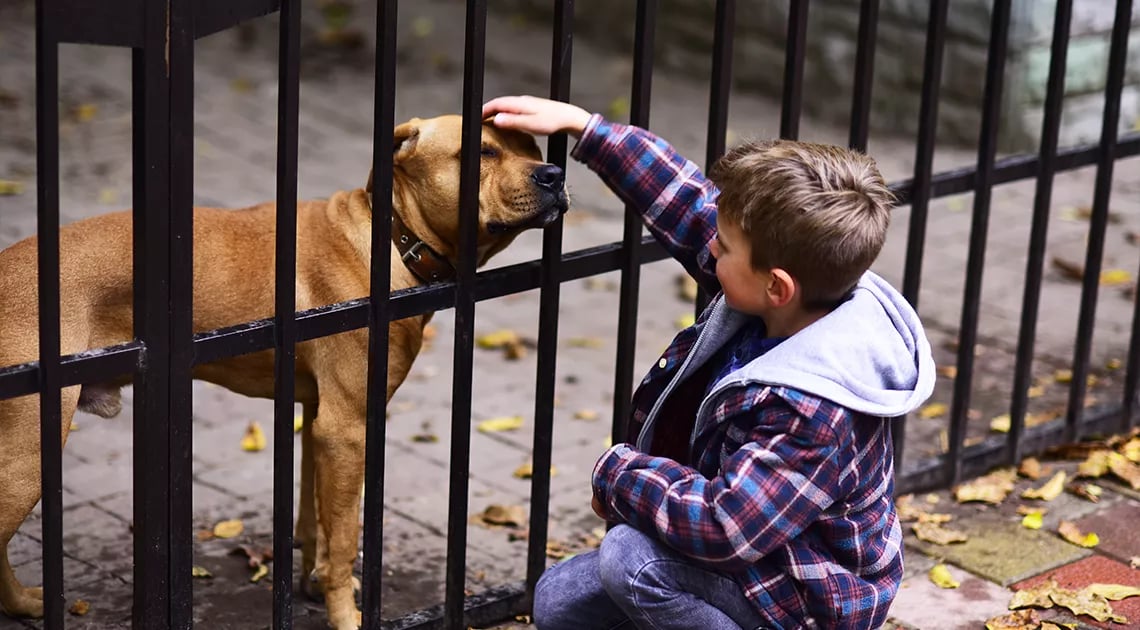
The Molossian-racism amongst dog lovers
Thanks to newspaper articles and the average type of person who adopts these breeds, the Molossians are considered by most as serial killers. Pitbulls, bull terriers, the AmStaff (or better, American Staffordshire terrier), Rottweilers, Corsican Dogs and the Molossian in general all pay the price of being the preferred breed of minus habens, persons who think they can demonstrate their strength and greatness by managing dogs that are important for their size and offensive ability. In fact, they do, by subduing them... We all agree that a pit bull bite will hurt more than a chihuahua's, but this does not mean that it is inherently more dangerous than the chihuahua, but that if it gets angry, it will do more damage. The already mentioned minus habens buy these dogs as puppies and embrace the coercive approach indoctrinated by the erroneous belief that dogs should be subdued when they are still young, otherwise they will believe that they are the leader of the pack, rebel against their master and other such nonsense. To achieve their purpose, they do not hesitate to mistreat them, tug on their leash with a choke collar (or "sliding" collar, but the substance does not change: it still chokes the dog), scream and shout and let kicks and slaps fly if their dog does not submit to the will of its human "leader of the pack". In this delirium of omnipotence, they never consider that the puppy will then grow in size and that after the umpteenth annoyance, the young adult may decide to rebel, defend itself and say enough is enough. The plot of this story is always the same: at the first nip or bite, and sometimes even just for growling, the teenage dog ends up in a kennel with the stigma of being a biter. And very often it dies in there. I feel I want to put in a good word for these dogs, which are certainly not commonplace, but considering what they normally suffer, I include them among the dog angels. If I were to be treated in the same way, I wouldn't just bite... In big city kennels you will find mostly molossians, and in the kennel of Vignate, in the province of Milan, where I volunteer, they represent 75% of the total number of dogs: here only very few are dangerous and difficult to manage. The others endure imprisonment and wait for an opportunity to be liberated, even though they do not get a look in because of the widespread racism against them and they end up dying in a cage. On the contrary, these are strong, proud dogs that fight against adversity and form a powerful bond with their family. They are collaborative, intelligent, affectionate and beautiful, which never hurts. Their adoption is not a trivial matter because they are dogs of character, with powerful teeth, but by dropping the veil of distrust created by the media, you could discover the best of friends in these beasts.

The hunters' waste
Hunting dogs, with those big, languid round eyes, fill the kennels of countryside and mountain villages, where hunting is still in fashion. These animals, discarded by hunters, and by now either too old to work or inept, frightened by the blows they have received or with no predatory propensity, are eliminated or abandoned. Almost always, they are caught roaming the area in a pitiful condition, skeletal, frightened and completely inexperienced to life outside their enclosure and the woods. They are sensitive animals, often terrified by humans, especially if male (hunters are almost always males), and are prey to deep anxieties. After all, the life of the average hunting dog is this: it almost always stays in a cage with other unfortunate animals and is only allowed out during the hunting season a couple of times a week to work; it is fed every now and then and often has to fight to eat, and also suffers from the winter cold and the summer heat, not to mention the deprivation perpetrated for years. The adoption of a breton like Vilma, but also of a setter, kurzhaar, beagle, drahthaar, pointer, segugio and bracco in general, must be considered with prudence; do not be fooled by the puppy-like appearance of hunting dogs because they are beings with very precise needs, and you will have to learn to satisfy them if you want their well-being and harmony in the family. They are programmed to withstand physical fatigue for hours, selected to run in the woods, wade through rivers, throw themselves into brambles and crawl into slime, whereas If they are limited to a life in the city, they could one day develop behavioural disorders and psychophysical malaise. With these dogs you either live in a natural context or do as I do, that is, in my free time I load my dogs into the car and we go for a walk in environments more congenial to them. I think hunting dogs make the best life companions, as they are cheerful, dynamic, ready to launch themselves into new adventures, faithful, cuddly, connected and sociable. In my life, I will always have a hunting dog next to me because I adore their spirit of buffoonery and their consistent readiness to have fun.
Maremmano puppy disguised as golden
If you were to read an adoption announcement that sponsors a golden retriever puppy from Southern Italy, know that in all likelihood it is a guardian shepherd of the Maremma breed, which is quite another thing! They look alike as babies, but when they grow up, there couldn’t be a more different animal. While the goldens are prepared for collaboration and have a regulated bite so as not to ruin a duck they might recover from a marsh, the shepherds involved in protecting livestock, such as the Maremmano, the Pyrenean Mountain Dog, the Šarplaninac, and the Caucasian Shepherd, are selected to defend livestock from predators such as the bear and the wolf, a job they do seriously, independently and if necessary with extreme aggression. So guardian shepherds are tough guys. The question regarding canine racism also applies to them, thanks to their size and misleading news stories, but in my opinion, they are among the most balanced and reliable breed if they are respected and know their prerogatives. The guardian shepherds in Italy, especially the Maremmano, crowd the kennels, places where they suffer their imprisonment tremendously. They are free and indomitable spirits, accustomed to acting independently and with great self-confidence, and they live within heterogeneous social groups composed of sheep, goats, donkeys, horses, hens, cats, other dogs and men, a soup of animals that for the Maremmano represents their family. Alone behind bars, they get depressed and fade away day after day. The adoption of these dogs may be initially more challenging, and if you think you can play test-of-strength games, know that it will have already defeated you: the Maremmana and their cousins are proud dogs, that at most, make collaborative compromises relationally, if you ask nicely. Cognitive and educational work is fundamental with guardian shepherds, but once put on the right path, most of the work is done and only wonder remains.

Genetic abuse
Some breeds would not exist if they were not a product of genetic abuse that causes enormous suffering to the animal. In particular, the aggrandized and fashionable brachycephalic dogs with the crushed snout, like the English and French bulldog, the pug, and the Cavalier King, that frequently develop serious respiratory pathologies, eye diseases, and headaches. So much so that an international campaign was launched in 66 countries to demand the abolition of these breeds. Think that the existence of the English bulldog depends on artificial insemination and cesarean delivery inflicted on the dam, which is an absurd act! In Norway they have already banned the breeding of English bulldogs and Cavalier Kings, another brachycephalic breed afflicted by genetic abuse that is fashionable in city living rooms. At one time they had a normal snout, until someone decided to flatten it and created a rung at the nose attachment which presses on the brain, a condition that can cause a shooting and chronic headache. So if you really want to welcome one of these dogs into your house, adopt one and rescue it from its cage, otherwise, by buying it, you will have financed a market with no dog welfare protection rules, where animals are being increasingly manipulated to conform to our aesthetic criteria: an eternal puppy with big eyes and a rounded head, having physical characteristics that stimulate our desire to take care of them as if they were babies. A kind of love that is not love.

